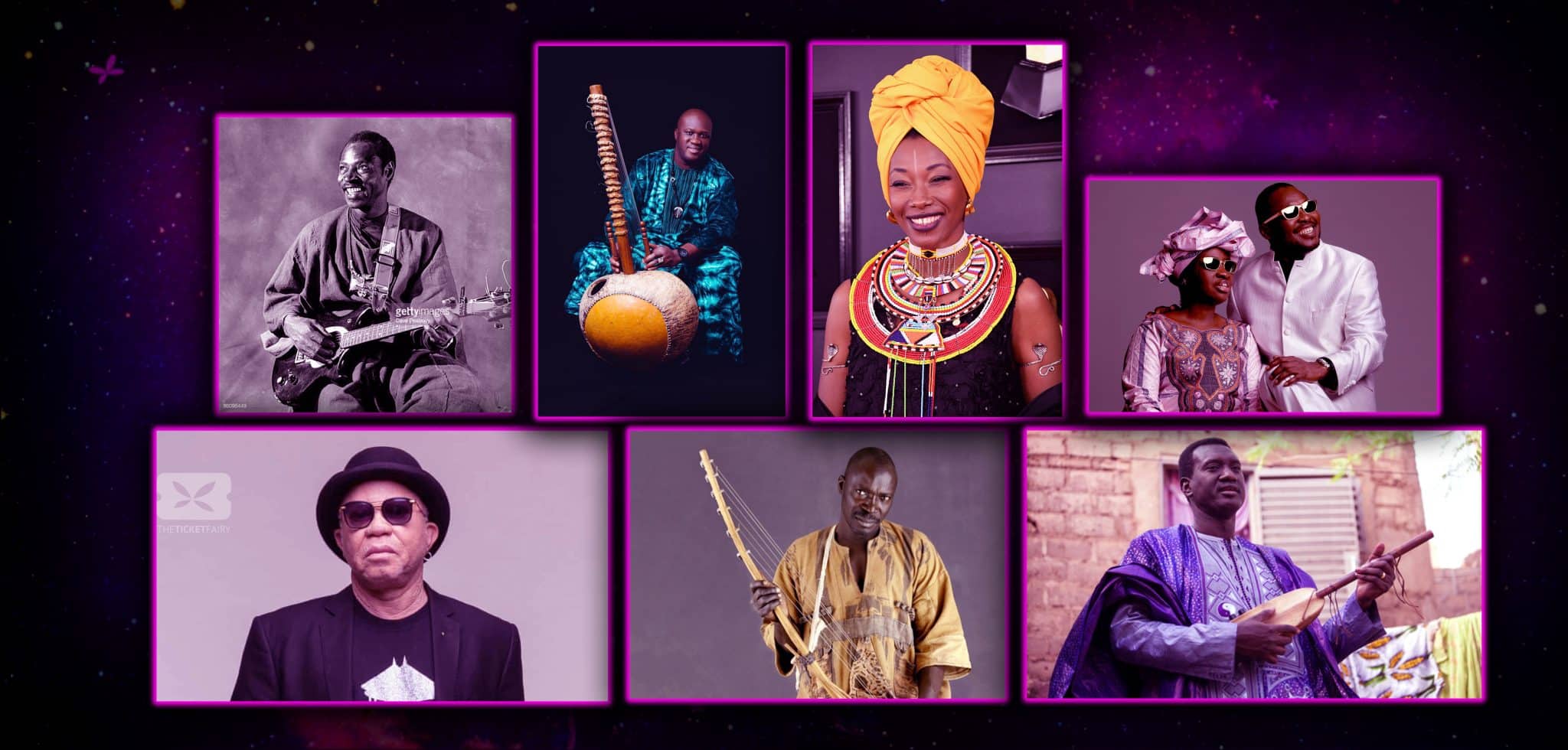We have expressed our sadness at learning of the latest political unrest in Mali’s northeast, a region that has experienced significant political unrest in the past.
It is obviously outside the purview of music journalism to discuss the complexities of Malian politics, but let us just say that we find it particularly disheartening to learn that the Islamist rebels who have taken over much of the country’s northeast have attempted to stop the musicians from performing there.
Few nations have a richer musical history than Mali, so now seems like a good time to examine and honor that heritage. As a result, we’ve put together a primer on some of our favorite Mali musicians; please browse through and enjoy their music, and don’t hesitate to share your own.
Top 5 Musicians From Mali You Should Know, More Below!
1. Tinariwen

Tinariwen are indigenous to the northern desert region of Mali, and their extraordinary three-decade history reflects, at least somewhat, that of their nation.
They came together in a camp for refugees on the Libyan border in 1979, took part in the Tuareg uprising in the early 1990s, and returned to Mali following the cease-fire between the rebels and the Bamako government.
They became well-known throughout the comparatively quiet 2000s, and they have also been a part of the nation’s recent history.
The band’s lead singer, Abdallah Ag Lamida, was apprehended earlier this year by Islamist rebels, but he was thankfully freed without incident.
2. Rokia Traoré
The daughter of a diplomat from Kolokani, a town in northwest Mali, Traoré plays the guitar and sings in the Bambara ethnic group’s Bamana language.
This is unique for a female artist, as she had a brief guitar lesson with Ali Farka Touré in the late 1990s. Her music is intriguing and very subtle; one of our favorite tracks from the 2000s is the absolutely spooky “Dounia.”
Top 5 Musicians From Mali You Should Know, More Below!
3. Touré Family

The first person who typically comes to mind when discussing Malian music is Ali Farka Touré, the grand old man of the desert blues who bestrides Mali’s modern cultural heritage.
In addition to being a major star in Africa, he played a significant role in introducing Western audiences to Mali’s rich musical heritage.
He frequently traveled throughout the US and Europe and worked with blues greats from across the Pacific, most notably Ry Cooder on the stunning Talking Timbuktu.
READ MORE BELOW!!!
Here Are the Top Madagascar Celebrity
Top 10 Most Beautiful Women in Uganda 2024
Touré passed away in 2006, but his son Vieux Farka Touré has carried on his father’s legacy by recording and releasing multiple superb albums since 2007.
Top 5 Musicians From Mali You Should Know, More Below!
4. Tata Pound
It is well known that West African music had a significant influence on the development of the blues, but cultural exchange is two-way, and it has been fascinating to observe how hip hop has recently returned across the Pacific, spreading throughout the continent and being masterfully translated into native tongues.
Given that hip hop has brought new sounds to Africa, it should come as no surprise that a nation with the rich musical heritage of Mali has embraced them enthusiastically, with acts like Tata Pound becoming enormously popular across the nation.
The group has also been outspoken in criticizing the recent difficulties facing the nation and calling for the restoration of real democracy.
Top 5 Musicians From Mali You Should Know, More Below!
5. Fanta Sacko

Fanta Sacko, a highly influential female musician in Mali, is credited with creating the bajourou genre, a relatively modern style that came into being in the 1960s.
The lyrics tackle romantic concerns instead of more conventional subjects like devotional music or lyric ballads, while the music uses guitars in place of traditional instruments.
This was contentious; when Sacko first came to prominence in the late 1960s, more conservative singers reportedly derided her songs as “jarabi jarabi,” which translates to “love love.”
Although Sacko’s career ended in the 1970s after only one album was released due to an apparent overdose on skin bleach, the genre remains popular today.






